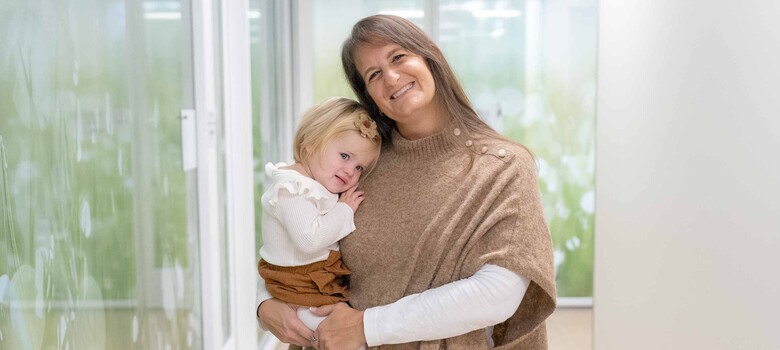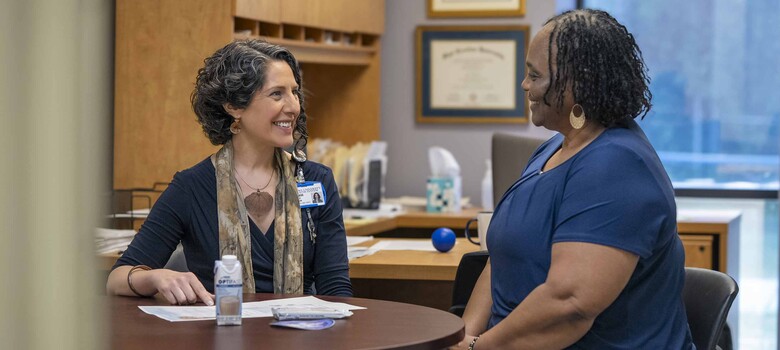 From the DukeHealth.org archives. Content may be out of date.
From the DukeHealth.org archives. Content may be out of date.
Kids Stash the Darndest Things

When your child performs disappearing tricks involving the nose, ears, and other places, look to the wisdom of Duke Urgent Care providers, who have seen it all.
On occasion, one of my kids will present me with a particularly challenging problem, and I know exactly what to do. So rare and so perfect are these moments that I remember them with great detail for long after. Like the time nearly two years ago when my son, then three years old, came to me with a popcorn kernel lodged too far up his nose to grab. I didn’t hesitate. “Let’s do this,” I said to him, as I pinched closed the unaffected nostril, placed my mouth over his, and blew a sharp puff of air.
I’m not sure why my son erupted into giggles a second later. It could have been that this medical maneuver tickled, or it could have been the sight of my face covered with “collateral”—and one popcorn kernel.
I was able to be Mom of the Year at this moment because just a week prior I had seen a nurse practitioner at Duke Urgent Care Croasdaile (for an unrelated problem). We got on the subject of kids leaving their things where they shouldn’t—such as up noses—and he clued me in to the blowing trick (which actually has both a cutesy name, the “kiss technique,” and a fancy medical one, “positive-pressure expulsion,” I later learned from Jennifer Swanson, MD, medical director for Duke Urgent Care). Dr. Swanson told me more tips about dealing with foreign objects in various places, some cautions, and a few eye-openers.
Don't Try This at Home
In truth, the kiss technique is the only trick that’s usually safe for novices to attempt at home. As for other methods and other places in the body, those are best left to the professionals. “Most people don’t know the anatomy well enough—of the ear, for example—to know how to remove foreign objects without doing damage,” Dr. Swanson says. “We not only know the anatomy, but also have the proper tools to ensure safe removal.”
Take an impossibly tiny Polly Pocket doll shoe in the ear, for instance. “Unless you can easily work it out with your finger, you really don’t want to make an attempt on your own with any kind of tool because you could rupture the eardrum,” Dr. Swanson says.
Detective Work
Turns out, I was pretty lucky to have had to deal only with one foreign object in one orifice. Once younger kids discover that things can fi t in one place, they’re likely to try other places—just for fun. So if there’s a rock in the nose, check the ears as well.
Some kids are just too young to be able to confess what they’ve done. Recurrent, icky, purulent nasal discharge or nasal infection could be a sign that something is lodged in the nose and has been there for a while.
And children don’t necessary outgrow the tendency. Dr. Swanson and colleagues have seen tweens and teens with objects in noses and ears, but they won’t admit it. Instead, they might visit the urgent care office complaining of ear pain.
And More Detective Work
Then there’s the issue of kids swallowing objects, which can lead parents to a different kind of detective work a day or two later. But it’s important to know that any swallowed object calls for immediate medical care. Any nonfood item that goes in the mouth and doesn’t come back out can potentially be lodged in the airway or esophagus, so it’s best to find out where it landed right away.
Two ingestible items that are deceitfully dangerous are small batteries and strong magnets, says Scott Elston, MD. “Small batteries, like the ones in hearing aids and small toys, are not only easy to swallow, but can quickly begin to corrode the intestinal wall. Multiple magnets that are ingested can link together and cause an obstruction or even an interruption of circulation to the bowel.”
If the swallowed object does turn out to be harmless and goes into the stomach, once it gets to the small intestine, you’re pretty much home free. Just keep an eye out for a day or two to make sure the “rite of passage” completes.
Keep it Simple, Superhero
After my heroic success with the kiss technique, I e-mailed Linthicum to thank him for the advice. He replied, “I’m glad it worked. Not that you want to encourage it, but what kind of distance did you get on the kernel?”
He brings up a good point. Can you discourage kids from sticking stuff in weird places to begin with? The simple rule that parents already know seems to be the best advice: “Just be careful what is left in reach of children and toddlers, not only from this standpoint, but also as a choking standpoint,” Dr. Elston says. “Items lodged in the nose can ultimately become a choking hazard, be aspirated into the lung, and cause other complications.”


